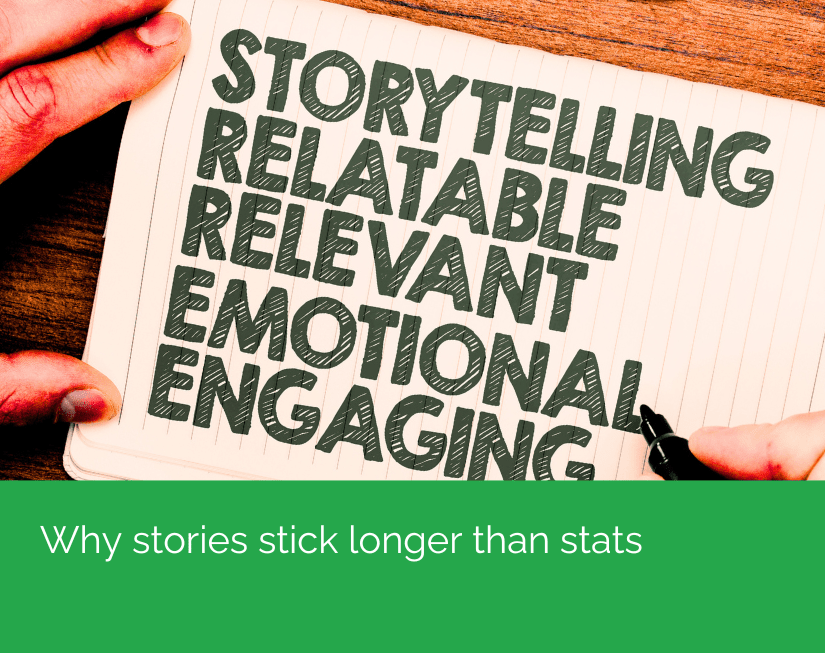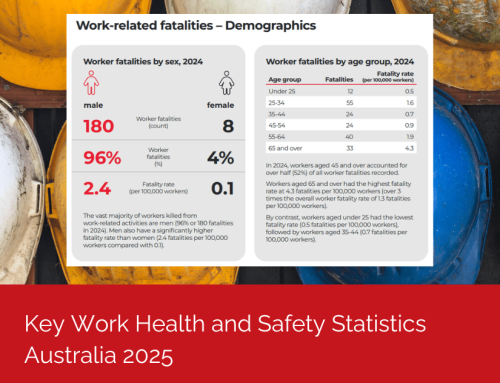
Whether you’re leading a safety briefing, launching a project, or running a learning session – data alone rarely sparks action. Stories do.
The monthly toolbox talk started like any other. “Alright, listen up crew. Toolbox, same as always. We’re tracking at 92% of target this month, no LTIs this month, looks like the weather may slow us down a bit this month. ”
Boots scraped on the concrete floor, someone yawned, a few blokes flicked at their phones, waiting for it to be over. But the supervisor continued.
“But here’s what matters… Yesterday, over on another site, one of the crew slipped on the scaffold. His harness snapped tight. For a few seconds, he was hanging there, legs kicking, white as a sheet. We hauled him back up, shaken. Later, he told me the only thing running through his head was, ‘What if my kids grow up without me?’ That harness didn’t just save a fall. Because he was clipped on, the harness was tested, the rescue drill worked, and because his tools were tethered, no one else was hurt. That gear gave him the chance to go home, and it protected his mates below.”
The crew fell silent. The shuffle and chatter vanished. Every eye was locked on the supervisor. Suddenly, the numbers weren’t just numbers anymore.
That’s the power of story.
A story makes the message human. It connects the dots between what’s being said and why it matters. It builds trust, clarity, and stays in our memory – three things every leader needs to influence, teach, or shift behaviour. And it’s not just for toolbox talks or safety briefings. Whether you’re running a team meeting, presenting a proposal, onboarding new staff, or leading a workshop, stories help bring your message to life.

The science of stories: What the brain tells us about influence
Why do we stories impact us long after the numbers fade?
Neuroscience tells us why.
- While data lights up language centres, a compelling story activates more of our brain, triggering the sensory, emotional, and even motor regions and our brain responds as though we’re experiencing the moment, not just hearing about it.
- Stories also stimulate key neurochemicals: oxytocin (which builds trust), cortisol (which grabs attention), and dopamine (which drives motivation) which is a powerful mix when you’re trying to influence, inspire, or lead.
Stories stick because data alone doesn’t influence
Leaders often default to “data-dumping”, relying on stats, dashboards, or KPIs, hoping that facts alone will spark clarity or change. But while data might inform, it rarely inspires.
When we use stories, we create the emotional connection and context that help people understand not just what’s happening, but why it matters. Stories can shift thinking, shape behaviour, and turn information into meaningful learning – a must have skill for anyone leading, communicating, or coaching others.
And storytelling isn’t only for executives or frontline supervisors. Project leads, facilitators, and team members often need to influence without formal authority. Whether you’re giving feedback, presenting results, onboarding a new staff member, or leading a team meeting – stories help your message land and stick.
Tips for building influence through storytelling
Lead with lived experience.
Want your team to take something seriously? Don’t just share policy or theory, show your audience through stories, when and how you learned it, especially if you learned it the hard way. Real stories beat polished slides and vulnerability builds credibility.
Add context to stats.
Numbers and metrics are important, but will mean more with the story behind them. Instead of saying, “We’re behind on sales targets,” a leader might say, “We lost a week on that job when two senior team members were pulled onto another project. The newer team members stepped up under pressure, and while we didn’t hit the number, they kept the quality high, and the client noticed.” That context turns a disappointing stat into a story of resilience, learning, and leadership under pressure. Always ask yourself: What story are these numbers telling that people need to know?
Make values visible.
Don’t just say what matters, show it. Share a story about someone who lived the value of initiative, care, upstanding or accountability when it counted. Values are only real when people can see them in action.
Let your people tell their stories.
Whether you’re debriefing a project, reviewing a process, or leading a workshop, ask people to talk about what surprised them, challenged them, or changed their thinking on a topic. Those stories often hold the gold. The story behind the work is usually where the real learning happens and is what people remember long after the theory is forgotten.
In a world full of dashboards and noise, next time you need your message to land, don’t just rely on stats, tell a story.





